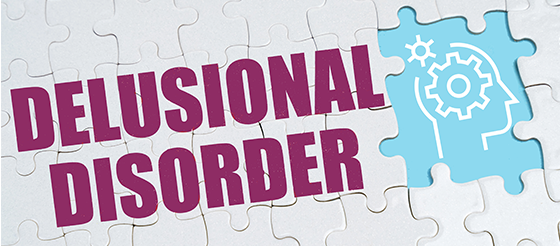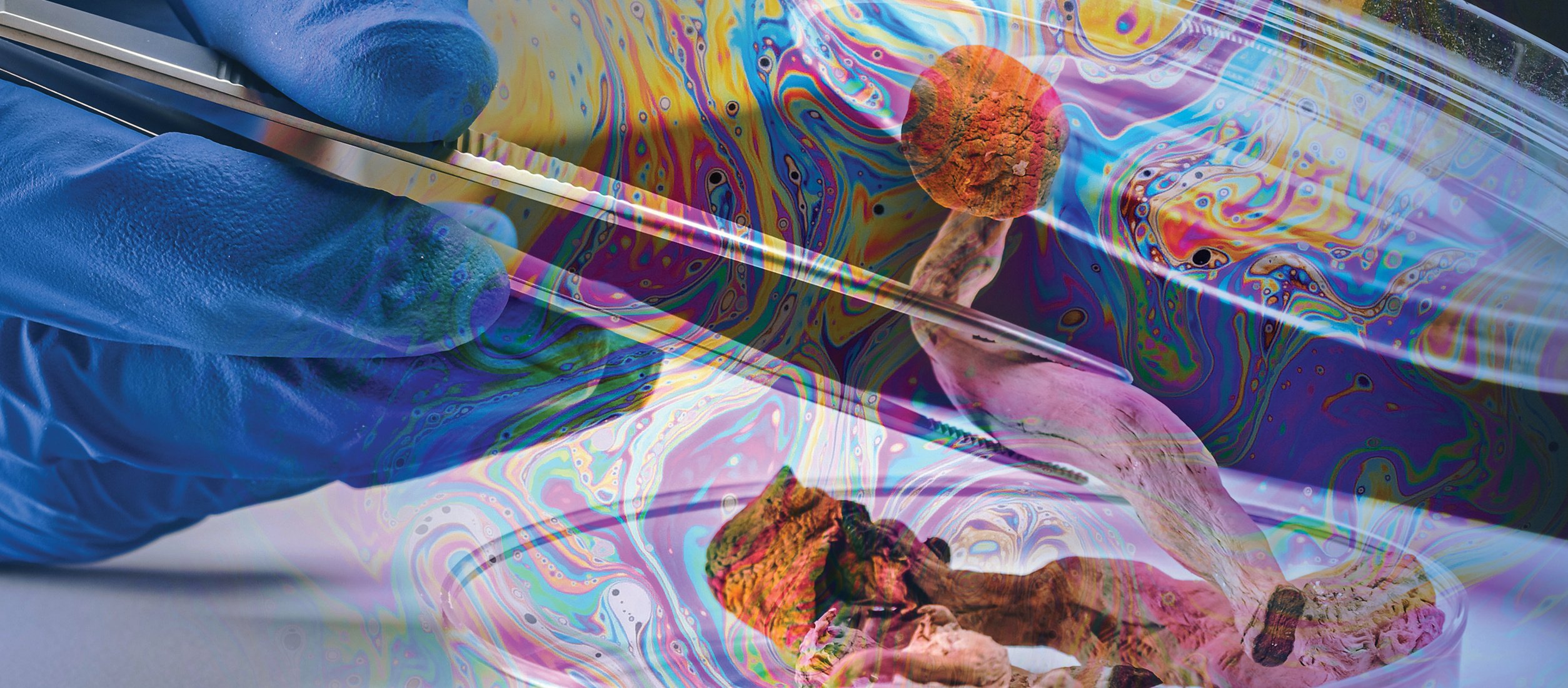Delusions
Delusions are fixed beliefs. A person’s intelligence or background does not account for them, and one of the critical features of a delusion is the extent to which the person holds firm to this belief, even in the face of disconfirming evidence or proof to the contrary.
Delusions can be difficult to distinguish from overvalued ideas, which are unreasonable beliefs that a person holds but with some level of doubt. Recent research indicates that abrupt onset, implausible content, and relative indifference to the opinions of others may be better distinguishing features for delusions than overvalued ideas. Individuals with delusional beliefs are convinced that their beliefs are true.
Three Criteria for Delusions
In the early 1900s the psychiatrist Karl Jaspers set out three main criteria for a delusional belief:
- Certainty (the belief is held with absolute conviction)
- Incorrigibility (the belief is immune to change by compelling counterargument or proof to the contrary)
- Impossibility (implausible, patently untrue, or bizarre; simply not based in reality)
Categorization of Delusions
Delusions are categorized as bizarre or non-bizarre and as mood-congruent or mood-incongruent.
- Non-Bizarre delusions are beliefs that, although false, are at least possible, such as the person believing that she is being followed or watched.
- Bizarre delusions are strange and implausible beliefs, such as having a piece of one’s anatomy removed (when it has not been) without leaving any wounds or scars. Generally, a belief that expresses the loss of control over an individual’s mind or body is considered a bizarre delusion).
Some examples of bizarre delusions are:
- Thought withdrawal: one’s thoughts have been “removed” by an outside force
- Thought insertion: that thoughts have been put into one’s mind
- Delusions of control: that an external force is manipulating one’s body or actions
- Delusions of misidentification: an individual believes that other people are imposters, are duplicated, or metamorphose into something/someone else
-
- Capgras delusion: one (or more) people significant to the individual are believed to be “look-alike” imposters
- Fregoli delusion: strangers are believed to be familiar people in disguise
- Reduplicative paramnesia: people or places are believed to be duplicate
- Mirror agnosia: one’s reflection is thought to belong to or be someone else.
- Delusions of misidentification are estimated to occur in
- 1-4% of inpatient psychiatric patients
- 4% of patients with psychoses
- 15% of patients with schizophrenia
- 8-16% of patients with dementia
Mood incongruence is a term used to describe a severe symptom of bipolar disorder. It is when the person's belief or action (hallucination or delusion) does not match their mood.
- Mood-Congruent delusions contain content consistent with mood states (depression or mania), such as a depressed person believing that others disapprove of him or a manic person thinking she is a supreme being.
- Mood-Incongruent delusions do not involve typical manic or depressing themes, or the content is a mixture of mood-incongruent and mood-congruent themes.
Delusional Themes
Delusional content can come in any variety; however, several common themes for delusional content have been identified. Examples of some of the most common themes are:
- Grandiose Delusions are characterized by fantastical beliefs that one is powerful, famous, omnipotent, or otherwise unique.
- Delusions of Control: This is a false belief that another person, group of people or external force controls one's thoughts, feelings, impulses, or behavior.
- Nihilistic Delusions: A delusion whose theme centers on the nonexistence of self or parts of self, others, or the world. A person with this delusion may falsely believe that the world is ending.
- Delusions of Religiosity: Delusions with religious or spiritual content.
- Delusions of Infidelity: A delusion that one’s spouse or lover is having an affair.
- Somatic Delusions: Delusions with content about bodily functioning, bodily sensations, or physical appearance.
- Delusions of Guilt: The false feeling of remorse or guilt of delusional intensity.
- Delusions of Reference: The false belief that innocuous remarks, events, or objects in one's environment have personal meaning or significance.
- Erotomania: The delusional belief that another person is in love with the deluded person.
Delusional Disorder
The current diagnostic systems used in North America (Diagnostic and Statistical Manual of Mental Disorders; DSM-5-TR) and Europe (International Classification of Diseases; ICD-11) recognize delusional disorder as a mental illness.
“The essential feature of Delusional Disorder is the presence of one or more delusions with a duration of 1 month or longer” (APA, 2022, p. 105). Additionally, suppose the individual has prominent auditory or visual hallucinations, disorganized speech or catatonic behavior, or negative psychotic symptoms, such as flat affect, alogia, avolition. In that case, they will likely be diagnosed with schizophrenia (rather than delusional disorder).
Apart from the impact of the delusion(s), the individual must not show impairment in functioning for a diagnosis. Their behavior must not be odd or bizarre. Moreover, their delusions must not result from any mood episodes (depression or mania), and the delusions must not be due to the direct effects of a substance (e.g., drugs, alcohol, medication) or a medical condition.
The DSM-5-TR recognizes various subtypes of delusions based on their theme or content (p. 105-106):
- Erotomanic: delusions that another person, usually of a higher status, is in love with the individual
- Grandiose: delusions of inflated worth, power, knowledge, identity, or special relationship to a deity or famous person
- Jealous: delusions that the individual’s sexual partner is unfaithful
- Persecutory: delusions that the person (or someone to whom the person is close) is being malevolently treated in some way and is the most common subtype
- Somatic: delusions that the person has some physical defect or general medical condition
Prevalence
The prevalence of delusional disorder in the United States is estimated to be around 0.02%, considerably lower than that of schizophrenia (1%) and depressive disorders (5%). The female-to-male ratio has been reported to vary from 1.18-3:1. Men are more likely than women to develop paranoid delusions, and women are more likely than men to develop delusions of erotomania. The mean age of onset is 40 years and ranges from 18-90 years.
Treatment
Delusional Disorder is challenging to treat for many reasons, not the least of which is that the individual truly believes that their delusions are genuine and is not typically motivated for treatment, with denial being a significant obstacle.
In the 1970s, the first report was published on pimozide to treat monosymptomatic hypochondriacal psychosis (now classified as a delusional disorder, somatic type by DSM-5-TR). Since then, there appears to be growing evidence for the effectiveness of various antipsychotic agents in treating delusional disorder. However, randomized, controlled trials are still relatively lacking in this area, and data since that time consists primarily of case reports.
Supportive therapies and Cognitive Behavioral Therapy can be helpful for individuals with Delusional Disorder. Still, the vast majority of treatment literature in this area indicates that these treatments alone (that is, without accompanying antipsychotic agents) have limited utility for the disorder.
Professional Resources
Mullen, R., & Linscott, R. J. (2010). A comparison of delusions and overvalued ideas. The Journal of Nervous and Mental Disease, 198, 35-38.
--
Medscape Reference: Delusional Disorder
--
Differentiating Delusional Disorder from Extreme Beliefs: An Introduction to the 17-Factor Model | Presented by Mark Cunningham, PhD, ABPP, in partnership with the American Board of Forensic Psychology (AAFP).






















